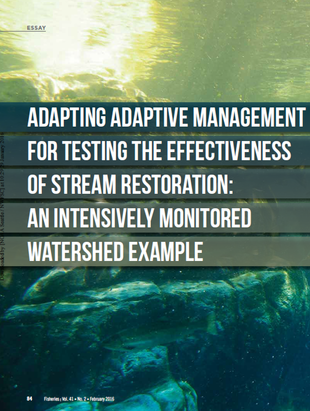Adaptive Management
In the 2020 Virtual Workshop, adaptive management was introduced as a way to approach restoration in the face of uncertainty. This page expands on that theme and provides helpful resources.
What is Adaptive Management?
Adaptive management is often described as “learning by doing.” More fundamentally, it provides a pathway to move forward in managing complex systems or projects even with uncertainty.
A classic adaptive management loop has five elements:
- Planning
- Doing
- Evaluation
- Learning
- Adjusting as needed
That adjustment step — revising models, plans, or actions based on what you learn — is at the heart of adaptive management.
One hallmark of good adaptive management is proactively recognizing multiple possible responses to management actions, and building contingency plans to address them.
Adaptive Management That Is Pragmatic and Affordable
Bouwes et al. (2016) propose how adaptive management can shift from a tool for only the largest projects with the biggest budgets to something that is a routine practice on almost every restoration project.
Reference:
- Bouwes N, Bennett S, Wheaton JM. (2016).
Adapting Adaptive Management for Testing the Effectiveness of Stream Restoration: An Intensively Monitored Watershed Example
Fisheries, 41(2), 84–91. DOI: 10.1080/03632415.2015.1127806
Examples of Adaptive Management Plans
Below are practical examples of adaptive management plans developed for low-tech restoration projects:
| Report | Description |
|---|---|
| Grouse Creek Restoration Adaptive Beaver Management Plan | Shahverdian & Wheaton (2017), Utah |
| Westerly Creek Beaver Dam Capacity Assessment | Shahverdian, Macfarlane & Wheaton (2016), Colorado |
| Hardware Ranch Adaptive Beaver Management Plan | Portugal et al. (2015), Utah |
| Spring Creek Wetland Area Adaptive Beaver Management Plan | Portugal et al. (2015), Utah |
| Scoping Study & Recommendations for an Adaptive Beaver Management Plan | Wheaton (2013), Park City, Utah |
| Asotin Creek IMW Restoration Plan | Wheaton et al. (2012), Washington |
| Bridge Creek Interim Report | Pollock et al. (2011), Oregon |

